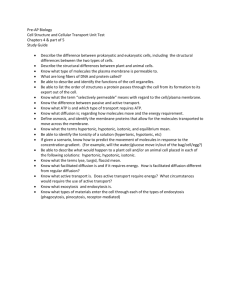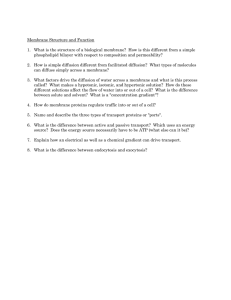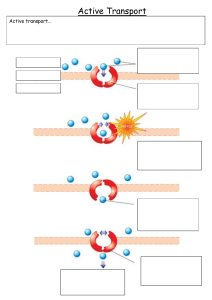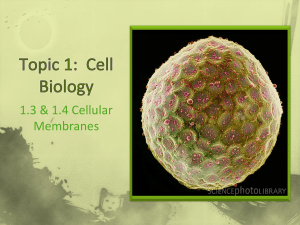Cells and Membrane Transport Quiz Review 1. List the three parts of
advertisement
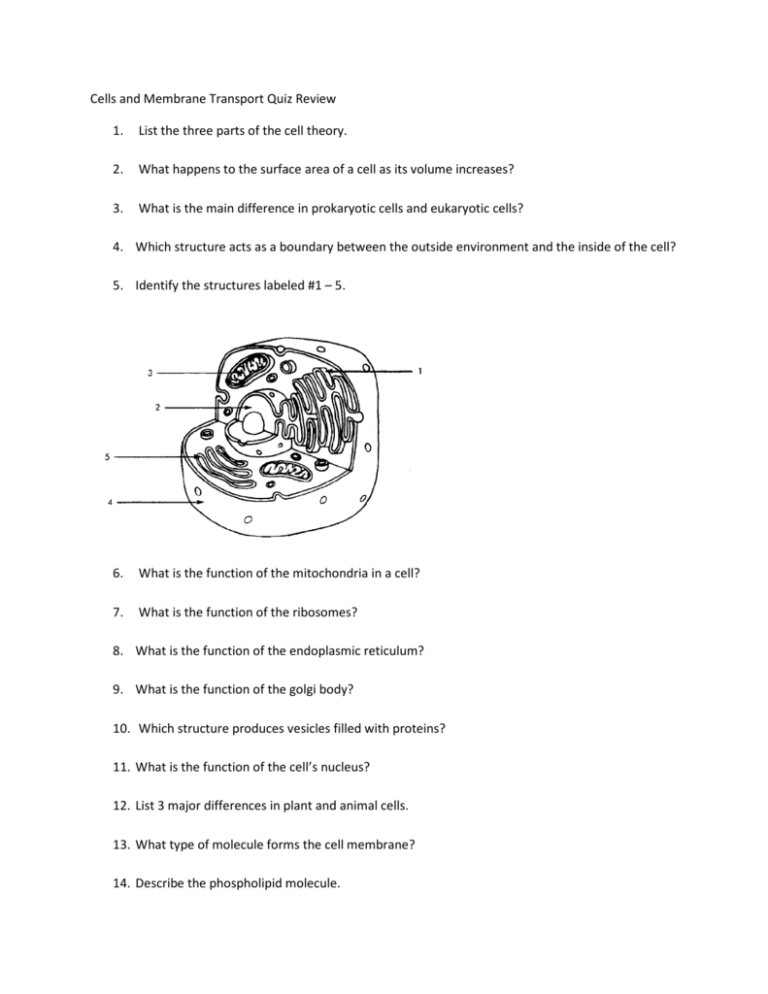
Cells and Membrane Transport Quiz Review 1. List the three parts of the cell theory. 2. What happens to the surface area of a cell as its volume increases? 3. What is the main difference in prokaryotic cells and eukaryotic cells? 4. Which structure acts as a boundary between the outside environment and the inside of the cell? 5. Identify the structures labeled #1 – 5. 6. What is the function of the mitochondria in a cell? 7. What is the function of the ribosomes? 8. What is the function of the endoplasmic reticulum? 9. What is the function of the golgi body? 10. Which structure produces vesicles filled with proteins? 11. What is the function of the cell cell’s nucleus? 12. List 3 major differences in plant and animal cells. 13. What type of molecule forms the cell membrane? 14. Describe the phospholipid molecule. 15. What is the goal of diffusion? 16. Define diffusion. 17. Define osmosis. 18. What is the main difference in passive and active transport? 19. Through what process do small molecules like oxygen and carbon dioxide move across the cell membrane? 20. Through what process do larger molecules like sugar, amino acids, and salt move across the cell membrane? 21. Describe a hypertonic solution. 22. Describe a hypotonic solution. 23. Describe an isotonic solution. 24. Which type of transport involves movement against the concentration gradient? 25. Through what process are molecules, such as proteins and polysaccharides that are too large to move into a cell through diffusion or active transport moved in by? 26. Through what process can waste molecules that are too large to be moved across a cell membrane be removed from the cell?




